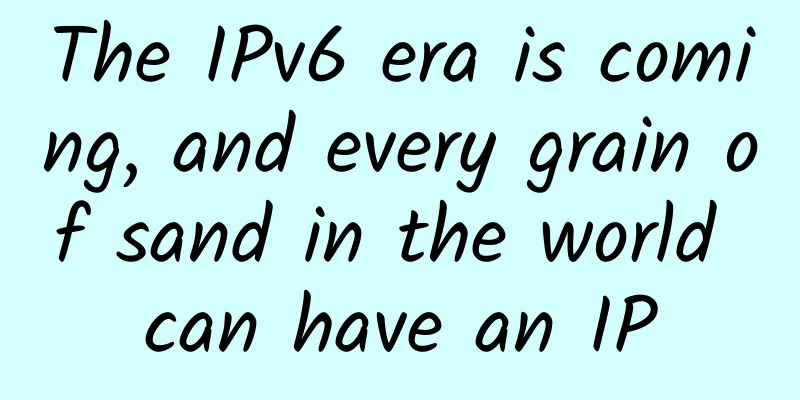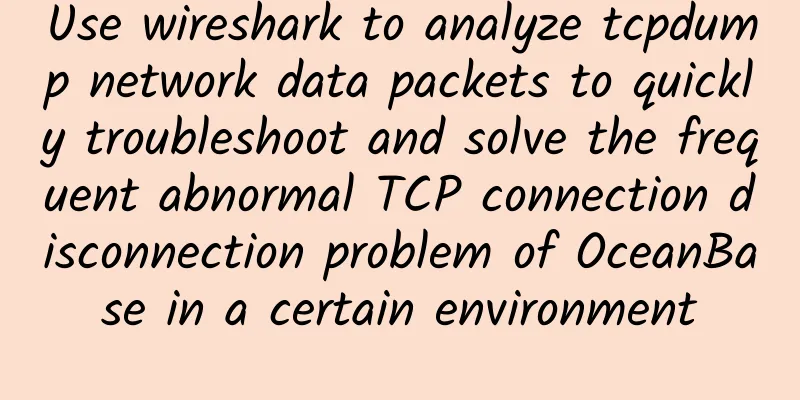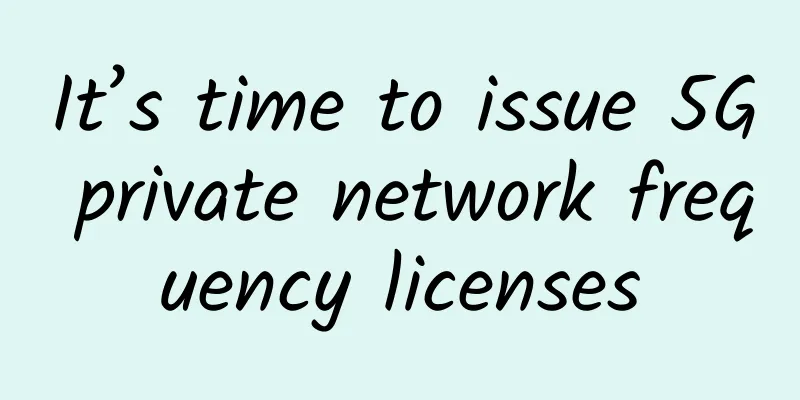Dynamic routing OSPF basics, area division, LSA types, one minute to understand

|
1. OSPF Message OSPF protocol packets are directly encapsulated as IP packets, and the protocol number is 89. OSPF has five types of protocol messages: (1) Hello message: It is sent periodically to discover and maintain OSPF neighbor relationships and to elect DR (Designated Router)/BDR (Backup Designated Router). (2) DD (Database Description) message: describes the summary information of each LSA (Link State Advertisement) in the local LSDB (Link State DataBase) and is used for database synchronization between two routers. (3) LSR (Link State Request) message: Requests the required LSA from the other party. After two routers exchange DD messages, they know which LSAs the other router has that are missing from the local LSDB. At this time, they need to send LSR messages to request the required LSAs from the other router. (4) LSU (Link State Update) message: sends the LSA required by the other party. (5) LSAck (Link State Acknowledgment) message: used to confirm the received LSA.
2. LSA Types The description of link state information in OSPF is encapsulated in LSA and published. Commonly used LSAs are of the following types: (1) Router LSA (Type-1): It is generated by each router, describes the link status and cost of the router, and is propagated in the area where it originates. (2) Network LSA (Type-2): It is generated by the DR, describes the link status of all routers in the network segment, and is propagated within the area where it originates. (3) Network Summary LSA (Type-3): It is generated by the ABR (Area Border Router), describes the route of a network segment in the area, and announces it to other areas. (4) ASBR Summary LSA (Type-4): It is generated by ABR, describes the route to ASBR (Autonomous System Boundary Router), and is advertised to the relevant areas. (5) AS External LSA (Type-5): generated by ASBR, describes the routes outside the AS (Autonomous System) and is advertised to all areas (except Stub areas and NSSA areas). (6) NSSA External LSA (Type-7): It is generated by ASBR in the NSSA (Not-So-Stubby Area) area, describes the routes outside the AS, and is only propagated within the NSSA area. (7) Opaque LSA: An extended general mechanism used for OSPF. Currently, there are three types: Type-9, Type-10, and Type-11. Type-9 LSA is only flooded within the local link scope. Grace LSA used to support GR (Graceful Restart) is a type of Type-9. Type-10 LSA is only flooded within the area scope. LSA used to support MPLS TE is a type of Type-10. Type-11 LSA can be flooded within an autonomous system scope. 3. OSPF Area 1. The border of an area is a router, not a link. A router can belong to different areas, but a network segment (link) can only belong to one area, or each interface running OSPF must specify which area it belongs to. After dividing the area, route aggregation can be performed on the area border router to reduce the number of LSAs announced to other areas and minimize the impact of network topology changes. 2. Backbone area and virtual link (1) Backbone Area After OSPF divides the areas, not all areas are equal. One area is different. Its area number is 0, which is usually called the backbone area. The backbone area is responsible for routing between areas. Routing information between non-backbone areas must be forwarded through the backbone area. In this regard, OSPF has two regulations:
In actual applications, the above requirements may not be met due to various restrictions. This can be solved by configuring OSPF virtual links. (2) Virtual Link A virtual link is a logical connection channel established between two ABRs through a non-backbone area. Both ends of the virtual link must be ABRs, and both ends must be configured to be effective. The area that provides a non-backbone internal route for both ends of the virtual link is called a transit area. 3. Stub area and totally stub area Stub areas are some specific areas. The ABR in the area will pass the inter-area routing information to the area, but will not introduce the external routes of the autonomous system. The routing table size and the number of LSAs of the routers in the area will be greatly reduced. To ensure that the routes outside the autonomous system are still reachable, the ABR in the area will generate a default route Type-3 LSA and publish it to other non-ABR routers in the area. In order to further reduce the size of the routing table and the number of LSAs of the routers in the Stub area, the area can be configured as a Totally Stub area. The ABR in this area will not pass the inter-area routing information and the external routing information of the autonomous system to this area. In order to ensure that the routes to other areas of this autonomous system and outside the autonomous system are still reachable, the ABR in this area will generate a default route Type-3 LSA and publish it to other non-ABR routers in this area. 4. NSSA area and totally NSSA area NSSA (Not-So-Stubby Area) is a variation of Stub area. The difference between NSSA and Stub area is that NSSA area allows the introduction of autonomous system external routes, and ASBR issues Type-7 LSA to the area. When Type-7 LSA reaches the ABR of NSSA, ABR converts Type-7 LSA into Type-5 LSA and propagates it to other areas. The area can be configured as a Totally NSSA area. The ABR in this area will not pass the inter-area routing information to this area. To ensure that the routes to other areas of this autonomous system are still reachable, the ABR in this area will generate a default route Type-3 LSA and publish it to other non-ABR routers in this area. |
<<: What factors determine the price of HTTPS certificates?
>>: Did you know there are 4 types of network latency?
Recommend
[Footprints] In addition to creating a highly available application environment, what else does FreeWheel's operation and maintenance do?
[51CTO.com original article] Perhaps in the eyes ...
Every front-end needs to know some network knowledge
1. OSI reference model and TCP/IP five-layer mode...
[5.1] DogYun: 30% off on all dynamic clouds, 20% off on classic clouds, 10 yuan free for every 100 yuan recharge, 100 yuan off for independent servers per month
DogYun (狗云) sent this year's May Day event pl...
The 2018 Secada Excellent Product Award selection is about to start
In order to support technological innovation, hel...
GSA: 140 operators in 59 countries and regions around the world have launched commercial 5G networks
GSA recently released the "LTE and 5G Market...
Ruijie Networks kicks off its "Renewal Action" with the 2023 National Partner Conference
On April 7, the Ruijie Networks 2023 National Par...
Huawei Cloud and Microsoft Enterprise Applications join hands to start a new journey of strategic cooperation
During HUAWEI CONNECT 2017, Huawei and Microsoft ...
How does the HTTP protocol achieve “secret interaction”?
[[261700]] Do you know the interactive process of...
Foreign media: Germany may completely shut down 3G network in 2022
Deutsche Telekom has become the third major opera...
Huawei's Shi Yaohong: The new infrastructure focuses on "foundation" to enable intelligent upgrades in thousands of industries
New infrastructure (i.e. new infrastructure const...
Huawei and its partners participated in the competition together for the first time, and are committed to promoting joint solutions!
[Original article from 51CTO.com] After the succe...
5G is here, and your way of playing TikTok should also change
On June 6, 2019, the Ministry of Industry and Inf...
TripodCloud: US CN2 GIA line VPS hosting $38.99/half year, 1Gbps bandwidth, optional large hard disk
Many friends are looking for CN2 GIA line VPS hos...
The Internet of Things in the Eyes of Operators: From 0 to 300,000, and then to the stars and the sea
In the forecast of the Internet of Things with tr...
Introduce the commonly used encoders and decoders in Netty
[[359182]] The previous article introduced Netty ...





![[Black Friday] Summary: Yunding Internet/Megahertz Cloud/Fluorescent Cloud/Journey Cloud](/upload/images/67cac22bb5d03.webp)



